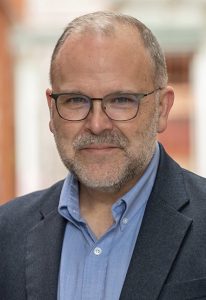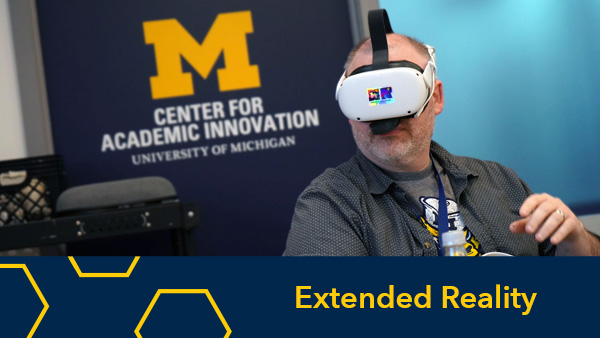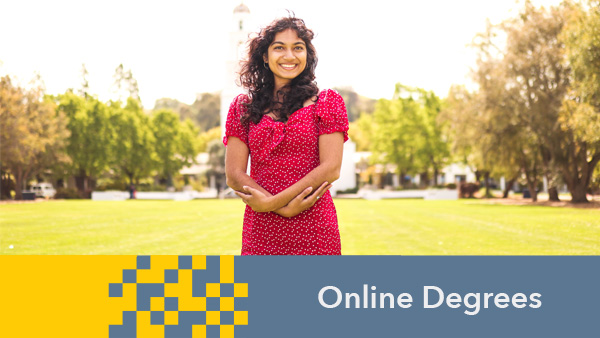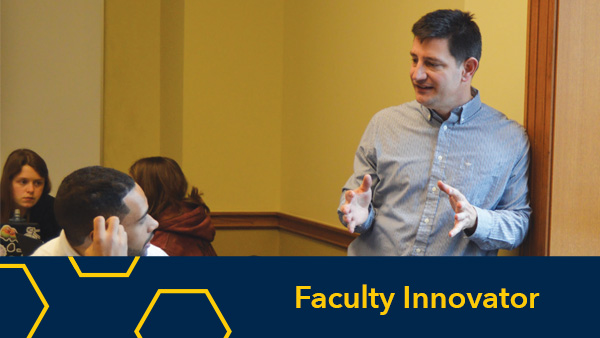Donald J. Peurach, PhD, Associate Professor of Educational Policy, Leadership, and Innovation in the School of Education

I am writing this contribution to the Center for Academic Innovation’s “30 Blogs in 30 Days” series at the same time that the University of Michigan is launching the 2019/2020 academic year. The combination has me reflecting on two very different ways that I engage in “academic innovation” that interact to advance the creativity, quality, and reach of my teaching.
Academic Innovation as a Personal and Private Affair
One mode of engagement is likely familiar to many professors: academic innovation as a personal and private affair. This mode begins with a small number of broad parameters to guide course design: for example, a title and course description; the number of credit hours and contact hours; and the day, time, and location of the course. Beyond that, professors leverage academic freedom and autonomy in selecting and designing content, pedagogical moves and strategies, learning activities and tasks, student assessments, and course evaluations.
It is by working within this first mode of engagement that I developed a graduate seminar for Fall 2019 that will support a dozen students in examining contemporary issues in program evaluation and improvement research in education. This is a fluid space in which dynamics among educational research, policy, and practice reward a fluid course development process. Working with few constraints and considerable autonomy, I was able to structure the course as a case study of a leading, large-scale reform initiative as it is playing out in real time, with course content, activities, and assignments structured to support students in critically examining efforts to advance educational opportunities and outcomes in hundreds of high poverty, underperforming high schools across the United States.
Academic Innovation as a Collaborative and Collegial Enterprise
The second mode of engagement is one that I experienced as the lead developer of the School of Education’s MicroMasters program in “Leading Educational Innovation and Improvement,” a series of five massive open online courses that launched in September 2017 on the edX platform. To date, we have had nearly 50,000 course enrollments in our MicroMasters program from learners in more than 180 countries.
As with a conventional, campus-based seminar, our MicroMasters project was guided by a small number of broad parameters within which I was free to innovate and create. However, where designing my campus-based seminar had me leveraging well-practiced academic freedom and autonomy within broad-but-familiar parameters, our MicroMasters project had me working within broader-and-unfamiliar parameters, and far beyond both my capabilities and my comfort. For example:
- The content of the MicroMasters would not be current issues in program evaluation and improvement research but, instead, a rapidly growing theoretical and practical knowledge base supporting the day-to-day work of large-scale, network-based educational improvement.
- The MicroMasters would not serve a small number of students who meet in one place at a fixed day and time but, instead, as many students as possible around the world at days and times of their choosing.
- The MicroMasters would not be a conduit for broadcasting academic content to isolated students but, instead, would recreate the intellectual rigor, practical application, and social richness characteristic of campus-based graduate seminars.
The novelty and complexity of our MicroMasters project had me approaching its development not as a personal, private affair but, instead, as a collaborative, collegial enterprise with colleagues within the University of Michigan and far beyond. For example:
- I collaborated with graduate students in the School of Education and colleagues in the Center for Academic Innovation to review research on online teaching and learning, to participate in study groups examining principles and examples of course design, and to develop our own signature instructional model that recreates the individual and social dimensions of campus-based graduate seminars (which we call “Self Directed/Community Supported Learning”).
- I collaborated with colleagues in the School of Education, the Ross School of Business, the Carnegie Foundation for the Advancement of Teaching, and a collection of leading reform enterprises to develop cutting-edge content for the MicroMasters, and I collaborated with colleagues in the Center for Academic Innovation to produce and present this content in creative and engaging ways.
- I again engaged with graduate students and colleagues in the School of Education and the Center for Academic Innovation to study learners’ experiences in the MicroMasters using analytics available through edX, portfolios submitted by students as part of a capstone assessment, and an experiment in which a campus-based seminar of 25 undergraduate and graduate students worked with nearly 100 online learners to complete and to evaluate two courses that comprise the heart of the MicroMasters.
- I joined colleagues from the Center for Academic Innovation at two global forums that allowed me to situate our work on the MicroMasters in a world-wide conversation about the present and future of online education.
Interactions in Modes of Academic Innovation
Among the many lessons learned in my work leading the development of our MicroMasters is that these two modes of academic innovation do not exist as mutually exclusive alternatives that sit at opposite ends of some continuum but, instead, function as complements that interact in positive, mutually reinforcing ways.
For example, I have experienced synergies in these two modes of academic innovation. Enthusiasm and capabilities honed through years of conventional, campus-based course design carried into and through my work on our MicroMasters program. Reciprocally, my work on our MicroMasters program now has me being far more explicit, intentional, and reflective in my campus-based course design than I had been in the past, when I had engaged academic innovation primarily as a personal and private affair.
Further, I have experienced the power of integrating these two modes of academic innovation in ways that I had never before imagined. In the experiment mentioned above, our MicroMasters courses functioned as a platform that enabled us to bring campus-based seminar participants into deep engagement with online learners around the world in understanding the possibilities and challenges of improving classrooms, schools, and systems in diverse local, regional, and national contexts.
Moving forward, my aim is to continue to leverage opportunities and supports catalyzed by the Center for Academic Innovation to bring these two modes of academic innovation into tighter coordination, in ways that blur boundaries between campus-based and online teaching and learning. As the Center for Academic Innovation draws more professors into this type of collegial, collaborative development activity, my strong hunch is that they, too, will experience growth in the creativity, quality, and reach of their teaching, to the advantage of learners on campus and around the world.


